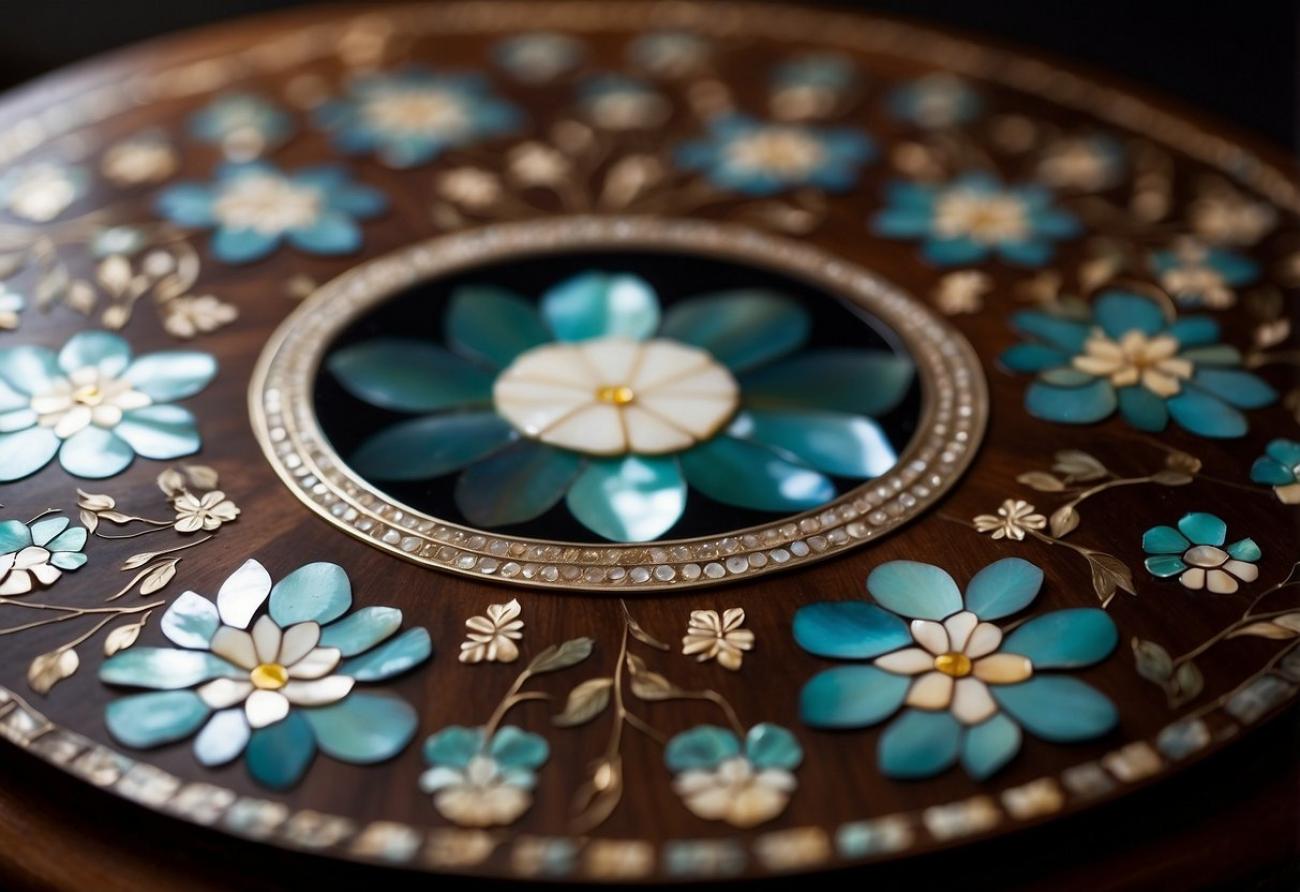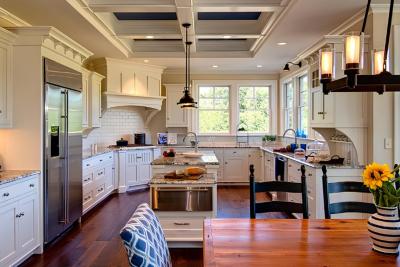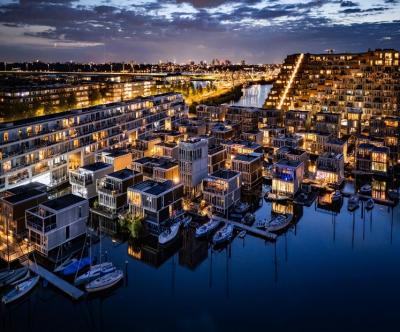
The Legacy of Mother-of-Pearl Lacquerware
A Craft Rooted in History
The art of inlaying in Vietnam dates back to the 3rd-5th centuries during the Northern domination period, with Trương Công Thành, known as the founder of the craft, flourishing under the Lý Dynasty. He developed the technique of mother-of-pearl inlaying in Chuôn Ngọ village, laying the foundation for this intricate craft.
Under the Trần Dynasty, the craft reached a high level of sophistication, with its products selected as tributes to the Yuan court in 1289. During the French colonial period, Vietnamese inlay craftsmanship gained international recognition. In 1868, Governor De La Grandière invited skilled artisans from Huế to Saigon to teach the craft, and in 1877, Vietnamese inlaid products were showcased at the Exposition Universelle in France, solidifying their global reputation.
 |
 |
Vietnamese inlay art is distinguished by its meticulous techniques, utilizing shells and mother-of-pearl to create high-end artistic products such as furniture, jewelry boxes, and decorative items.
Cultural Significance
More than just a craft, mother-of-pearl lacquerware embodies the spirit of traditional culture. Its shimmering beauty and enduring durability make it a symbol of refinement and artistic excellence. As globalization influences design, this timeless art form reminds us of the value in preserving cultural heritage.
Modern Applications of Mother-of-Pearl Lacquerware
Mother-of-pearl lacquerware has seamlessly transitioned into modern product design, offering a unique blend of functionality and beauty. Here are some of its contemporary uses:
From watches to necklaces, mother-of-pearl elevates accessories into statement pieces. Its natural iridescence adds a luxurious touch, making it a favorite in high-end jewelry and fashion. For example, lacquered combs featuring mother-of-pearl inlays are both functional and exquisite, appealing to consumers seeking elegance in everyday items.
 |
 |
In an age where aesthetics drive consumer choices, mother-of-pearl lacquerware has become a go-to for premium packaging. Wine bottles adorned with mother-of-pearl accents not only stand out on shelves but also enhance brand value. This approach merges traditional craftsmanship with modern marketing, creating packaging that’s as collectible as the product it contains. |
 |
 |
Dining is as much about presentation as it is about taste. Mother-of-pearl lacquerware enriches tableware design, from chopsticks to serving trays, bringing elegance to the dining experience. Popular in tea culture, these utensils showcase how traditional materials can redefine modern dining aesthetics. |
Mother-of-pearl is increasingly used in public art installations and interior decor. Its resistance to wear makes it ideal for wall panels, screens, and even outdoor sculptures. By combining mother-of-pearl with other materials, designers create visually stunning pieces that enhance both private and public spaces.
 |
 |
The Value of Mother-of-Pearl in Modern Design
Spiritual and Cultural Resonance Every piece of mother-of-pearl lacquerware carries the legacy of its craftsperson. Designers integrate this material into products to bridge the gap between past and present, ensuring that traditional techniques resonate with contemporary audiences.
Practical Advantages Beyond aesthetics, mother-of-pearl lacquerware offers unmatched durability. Its ability to withstand daily use makes it ideal for storage boxes, jewelry cases, and decorative furniture. This dual functionality—beauty and practicality—enhances its appeal in modern households.
 |
 |
Caring for Mother-of-Pearl Lacquerware
To maintain the timeless beauty of mother-of-pearl lacquerware, consider these care tips:
Conclusion
Mother-of-pearl lacquerware is more than a design choice; it’s a testament to the enduring relevance of traditional craftsmanship in modern times. Whether enhancing accessories, packaging, or public art, this material brings a unique charm that’s both timeless and versatile. Embrace the beauty of mother-of-pearl lacquerware to add sophistication and cultural depth to any design endeavor

The News 14/12/2025
Architectural Digest gợi ý Cloud Dancer phù hợp với plush fabrics và những hình khối “mềm”, tránh cảm giác cứng/rigid; họ liên hệ nó với cảm giác “weightless fullness” (nhẹ nhưng đầy) [3]. Đây là cơ hội cho các dòng vải bọc, rèm, thảm, bedding: màu trắng ngà làm nổi sợi dệt và tạo cảm giác chạm “ấm”.Pantone has announced the PANTONE 11-4201 Cloud Dancer as the Color of the Year 2026: a "buoyant" and balanced white, described as a whisper of peace in the midst of a noisy world. This is also the first time Pantone has chosen a white color since the "Color of the Year" program began in 1999. Pantone calls Cloud Dancer a "lofty/billowy" white tone that has a relaxing feel, giving the mind more space to create and innovate [1].

The News 04/12/2025
The Netherlands is one of the most vulnerable countries to climate change, with about a third of its area lying below sea level and the rest regularly at risk of flooding. As sea levels are forecast to continue to rise and extreme rains increase, the government is not only strengthening dikes and tidal culverts, but also testing new adaptation models. Floating housing in Amsterdam – typically the Waterbuurt and Schoonschip districts – is seen as "urban laboratories" for a new way of living: not only fighting floods, but actively living with water. In parallel with climate pressures, Amsterdam faces a shortage of housing and scarce land funds. The expansion of the city to the water helps solve two problems at the same time: increasing the supply of housing without encroaching on more land, and at the same time testing an urban model that is able to adapt to flooding and sea level rise.

The News 20/11/2025
Kampung Admiralty - the project that won the "Building of the Year 2018" award at the World Architecture Festival - is a clear demonstration of smart tropical green architecture. With a three-storey "club sandwich" design, a natural ventilation system that saves 13% of cooling energy, and a 125% greening rate, this project opens up many valuable lessons for Vietnamese urban projects in the context of climate change.

The News 10/11/2025
In the midst of the hustle and bustle of urban life, many Vietnamese families are looking for a different living space – where they can enjoy modernity without being far from nature. Tropical Modern villa architecture is the perfect answer to this need. Not only an aesthetic trend, this is also a smart design philosophy, harmoniously combining technology, local materials and Vietnam's typical tropical climate.

The News 25/10/2025
Hemp-lime (hempcrete) is a non-load-bearing covering material consisting of a hemp wood core (hemp shiv/hurd) combined with a lime-based adhesive, outstanding for its insulation – moisture conditioning – indoor environmental durability; in particular, IRC 2024 – Appendix BL has established a normative line applicable to low-rise housing, strengthening the technical-legal feasibility of this biomaterial.

The News 11/10/2025
Amid rapid urbanization and global climate change, architecture is not only construction but also the art of harmonizing people, the environment, and technology. The Bahrain World Trade Center (BWTC)—the iconic twin towers in Manama, Bahrain—is a vivid testament to this fusion. Completed in 2008, BWTC is not only the tallest building in Bahrain (240 meters) but also the first building in the world to integrate wind turbines into its primary structure, supplying renewable energy to itself [1]. This article explores the BWTC’s structural system and design principles, examining how it overcomes the challenges of a desert environment to become a convincing sustainable model for future cities. Through an academic lens, we will see that BWTC is not merely a building but a declaration of architectural creativity.